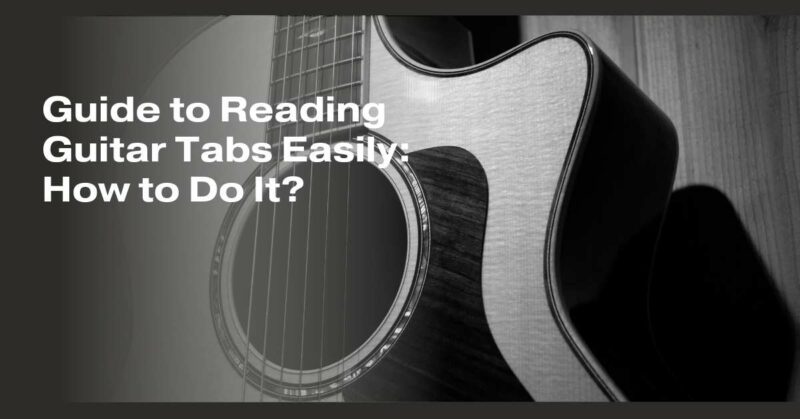Reading guitar tabs (tablature) is a popular and efficient way to learn and play songs on the guitar. Tabs provide a visual representation of the frets and strings, making it easier for beginners and experienced guitarists alike to learn new music. Here’s a guide on how to read guitar tabs easily:
1. Understand the Basics:
- Guitar tabs consist of six horizontal lines, each representing a guitar string. The top line represents the high E string (the thinnest string), and the bottom line represents the low E string (the thickest string).
- Numbers on the lines indicate which fret to press down on that particular string. A “0” means you play the string open (without pressing any fret).
2. Get Familiar with the Symbols:
- Aside from numbers, tabs may use various symbols to indicate specific techniques or effects. Common symbols include:
- Hammer-On (h): This symbol (e.g., 3h5) indicates that you should pick the first note (3rd fret) and then “hammer-on” the second note (5th fret) without picking it again.
- Pull-Off (p): A pull-off (e.g., 5p3) means you should pick the first note (5th fret) and then “pull-off” to the second note (3rd fret) without picking it again.
- Bend (b): A bend (e.g., 7b9) indicates that you should bend the string at the 7th fret to reach the pitch of the 9th fret.
- Slide (/ or \): A forward slash (/) or backward slash (\) between two numbers (e.g., 5/7 or 7\5) indicates a slide from one fret to another.
- Vibrato (v): The letter “v” often appears above a note, suggesting that you should add vibrato by rapidly bending and releasing the string at that fret.
3. Pay Attention to Rhythm:
- Guitar tabs don’t typically provide rhythm notation. To understand the rhythm of a song, listen to the original recording or use your intuition based on the note durations.
- Tabs may use horizontal lines or symbols to indicate the timing of the notes (e.g., | for bar lines or x for muted notes).
4. Follow the Sequence:
- Read guitar tabs from left to right, just like reading a book. Play the notes or chords in the order they appear.
5. Watch for Repeat Signs:
- Tabs often include repeat signs (e.g., ||: and :||) to indicate sections that should be played more than once. Pay attention to these signs and follow the repeats accordingly.
6. Keep Track of Chords:
- Tabs may include chord diagrams above the tablature. These diagrams show you where to place your fingers for specific chords used in the song.
7. Listen and Learn:
- While tabs provide a visual guide, it’s essential to listen to the song you’re learning to understand its nuances, dynamics, and timing accurately.
8. Practice:
- Start with simple songs and practice reading tabs regularly to improve your proficiency. As you become more comfortable, tackle more complex pieces.
9. Use Tab Apps and Websites:
- There are numerous tab apps and websites (e.g., Ultimate Guitar, Songsterr) that provide tabs for a wide range of songs. These platforms often offer playback features to help you learn songs more easily.
10. Combine with Sheet Music:
- If available, use traditional sheet music in conjunction with tabs. Sheet music provides additional information on rhythm, dynamics, and note duration.
Reading guitar tabs is a valuable skill for guitarists of all levels. With practice and familiarity, you’ll become proficient in reading tabs and using them as a valuable tool for learning and playing your favorite songs on the guitar.


